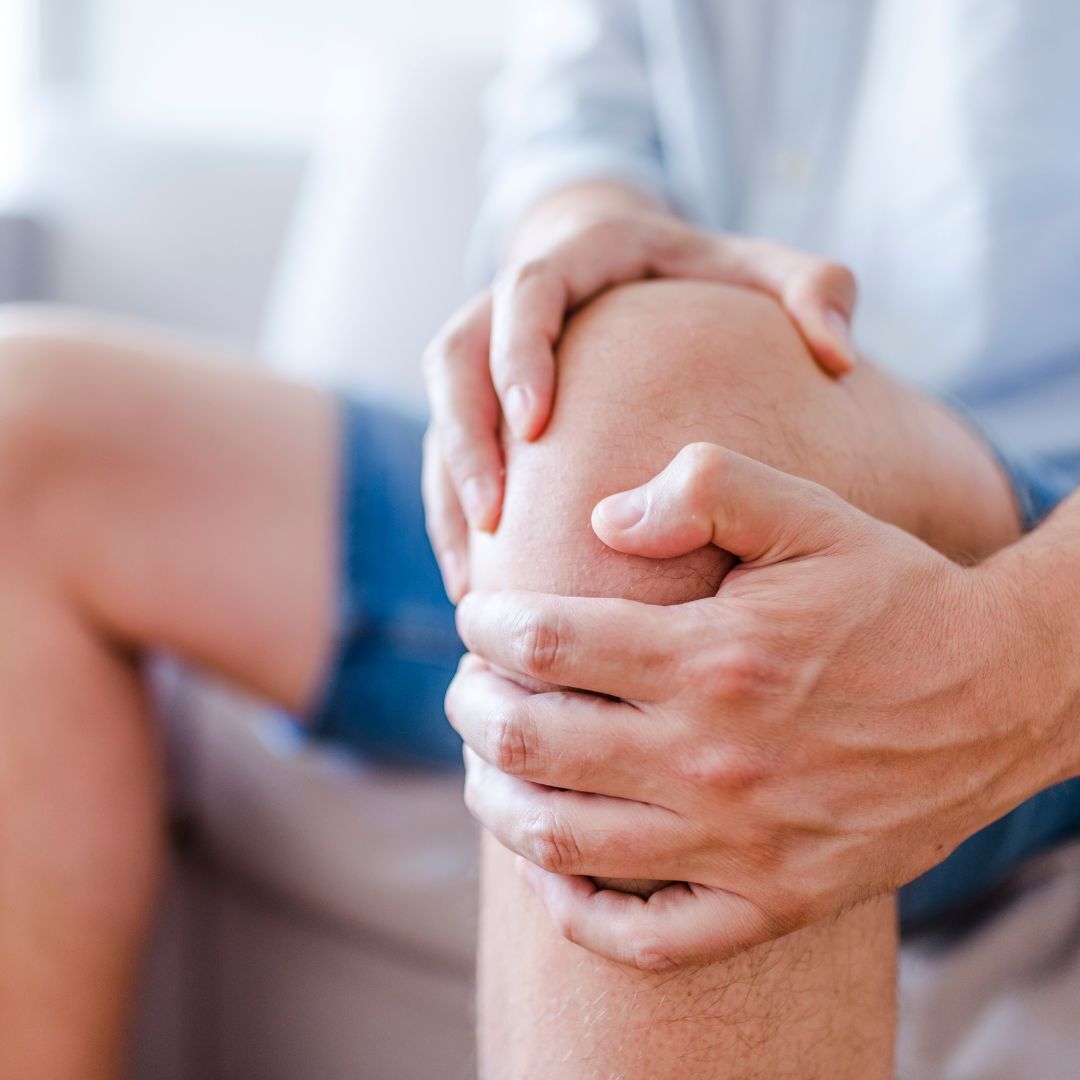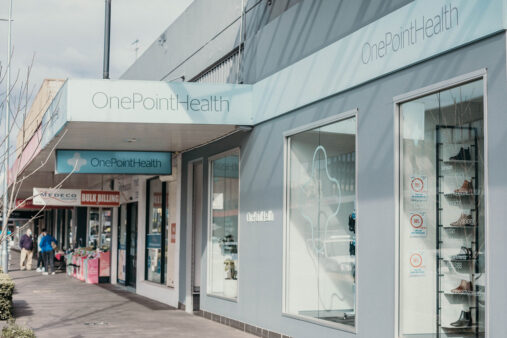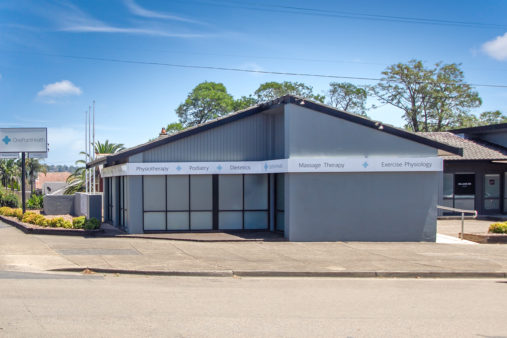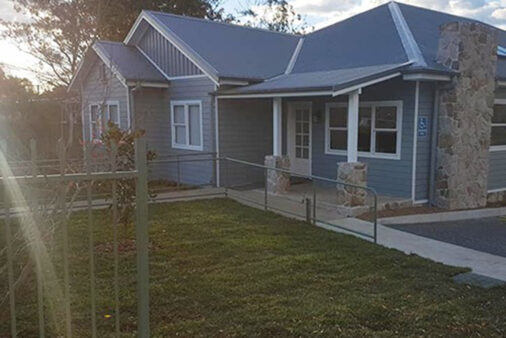Knee pain is a pervasive issue that can significantly impact an individual’s daily routine, from walking to performing everyday tasks. It can arise from a variety of sources, such as a sports injury or arthritis, and can manifest as either an acute or chronic condition. In fact, knee osteoarthritis is the second most prevalent cause of disability in the western world, with limited mobility and chronic pain being some of its most debilitating symptoms. In this article, we will explore the various types and causes of knee pain, as well as potential treatment options to help alleviate knee pain and restore mobility.
What causes knee pain?
Knee pain is common during growth spurts in children, or with trauma from sports or falls, or it may come on as we age with wear and tear (Osteoarthritis). Knee pain can stem from the muscles, ligaments, tendons, cartilage or meniscus. It can sometimes also be referred from the hip joint or lower back.
Acute knee injuries often occur with sports that involve:
- Rapid acceleration or deceleration.
- Twisting.
- Kicking.
- Sudden change in direction.
A more gradual onset of knee pain can occur during growth spurts. This is common in children who participate in activities or sports that involve:
- High volumes of running (Eg: Athletics).
- Repetitive jumping and landing (Eg: Basketball, Aussie Rules Football).
- Kicking (Eg: Football and Soccer).
- Squatting.
Chronic knee injuries are those that have lasted more than 3 months. The most common is osteoarthritis. Osteoarthritis causes the cartilage in your knee joint to thin and the surfaces of the joint to become rougher, which means that the knee doesn’t move as smoothly as it should, and it might feel painful and stiff. Osteoarthritis can affect anyone at any age, but it’s more common in women over 50.
Common Knee Injuries
Anterior Cruciate Ligament (ACL) tears
The anterior cruciate ligament (ACL) is one of the key ligaments that help stabilize the knee joint. The ACL connects the thighbone (femur) to the shinbone (tibia). It’s most commonly torn during sports that involve sudden stops and changes in direction — such as basketball, soccer, tennis and volleyball.
Signs and symptoms:
- The person will often hear a ‘pop,’ ‘crack’ or feel a ‘snap’ within the knee.
- The knee often swells within the first few hours of the injury. This may be a sign of bleeding inside the knee joint.
- Giving way or instability of the knee, particularly with twisting.
- Restricted movement and pain, particularly in the first few weeks following the injury.
Meniscus injuries
The meniscus is a piece of cartilage in your knee that cushions and stabilizes the joint. It protects the bones from wear and tear. The meniscus can tear from acute trauma or as the result of degenerative changes that happen over time. Acute meniscus tears often happen during sports. These can occur through either a contact or non-contact injury — for example, a pivoting or cutting injury. As people age, they are more likely to have degenerative meniscus tears. Aged, worn tissue is more prone to tears. An awkward twist when getting up from a chair can cause a tear in an ageing meniscus.
Signs and symptoms:
- Pain along the inside or outside of the knee along the joint line
- Swelling
- A popping sensation during the injury
- Difficulty bending and straightening the leg
- A tendency for your knee to get locked up or give way
Knee Osteoarthritis
Knee osteoarthritis is a very common long-term condition that causes joint pain, stiffness and reduced movement. Over time, the cartilage layer that protects the ends of your bones wears away and new spurs of bone development. Without cartilage, the bones in the joint rub together, causing pain, swelling, stiffness and reduced movement. This can make it harder for you to complete daily activities such as walking and climbing stairs.
Signs and symptoms:
- Knee pain that is gradual in onset and worsens with activity
- Knee stiffness and swelling
- Trouble bending the knee
- Pain after prolonged sitting or resting
- Crepitus or a cracking sound with joint movement.
Patella Tendinopathy
A tendinopathy is an injury to the tendon connecting your kneecap (patella) to your shinbone. The patellar tendon works with the muscles at the front of your thigh to extend your knee so that you can kick, run and jump. Patellar tendinopathy is primarily a condition of relatively young (15–30 years old) athletes, especially men, who participate in sports such as basketball, volleyball, athletic jump events, tennis, and football, which require repetitive loading of the patellar tendon.
Signs and symptoms:
- Pain and tenderness at the front of the knee over the patella tendon.
- The pain is made worse with jumping, landing or running activities.
- The onset of pain is usually gradual and commonly related to an increase in sports activity.
- Often the tendon feels very stiff first thing in the morning.
- The affected tendon may appear thickened in comparison to the unaffected side.
Medial (MCL) and Lateral Ligament (LCL) sprains
Ligaments are tough, flexible bands of tissues that hold bones together. The MCL is the ligament located on the inside of your knee joint. It links your thighbone (femur) and shinbone (tibia). The LCL is the ligament located on the outside of your knee linking the thighbone and calf bone (fibula).
An MCL sprain can be caused by a player applying force to the outside side of the knee during contact sports, such as football and soccer. An LCL sprain can occur if a player applies force to the inside of the knee during contact sports.
Signs and symptoms:
- Pain at the sides of your knee. If there is an MCL injury, the pain is on the inside of the knee; an LCL injury may cause pain on the outside of the knee.
- Swelling over the site of the injury.
- Instability — the feeling that your knee is giving way.
Patellofemoral Syndrome (PFPS)
Patellofemoral pain syndrome is pain at the front of your knee, around your kneecap. Sometimes called “runner’s knee,” it’s more common in people who participate in sports that involve running and jumping. It is a chronic condition that tends to worsen with activities such as squatting, sitting, climbing stairs, and running. PFPS is caused by vigorous physical activities that put repeated stress on the knee —such as jogging, squatting, and climbing stairs. It can also be caused by a sudden change in physical activity. Other causes include Patellar Malalignment, muscle imbalances/weakness, poor footwear or playing surface.
Osgood Schlatter’s Disease
Osgood-Schlatter disease is a common cause of knee pain in young children and adolescents who are still growing. The tendon that connects the shinbone to the kneecap pulls on the growth plate at the top of the shinbone. Activities and sports cause this to happen over and over, which causes injury to the growth plate.
Athletic young people are most commonly affected by Osgood-Schlatter disease—particularly boys between the ages of 10 and 15 who play games or sports that include frequent running and jumping.
Signs and symptoms
- Pain in one or both knees.
- Pain when straightening the knee joint or full squatting.
- Pain on running, or going up and down stairs.
- Pain that eases with rest.
- A swollen tibial tuberosity (bony prominence at the top of your shin).
- Red and inflamed skin over the tibial tuberosity.
- Quadriceps muscles can sometimes lose strength and bulk.
Patella Dislocations
A patella dislocation occurs when the kneecap pops sideways out of its vertical groove at the knee joint. It’s usually caused by force, from a collision, a fall or a bad step. Associated problems normally occur with patellar dislocations, the most obvious of which is the tearing of the ligaments that stabilise the kneecap itself.
Signs and symptoms:
- Rapid, acute swelling.
- Extreme pain initially until relocation occurs.
- Continued pain along medial (inside) ligaments.
- Discolouration medially at the site of ligament injury.
- Sense of instability and apprehension that the problem will happen again
Diagnosing Knee Injuries
Most knee injuries can be diagnosed by a comprehensive assessment from a physiotherapist as well as imaging. Other diagnostic methods include:
X-ray
Detect bone fractures and degenerative joint disease eg Osteoarthritis
Computerized Tomography (CT) scan
CT scanners combine X-rays taken from many different angles to create cross-sectional images of the inside of your body. CT scans can help diagnose bone problems and subtle fractures.
Ultrasound
This technology uses sound waves to produce real-time images of the soft tissue structures within and around your knee.
Magnetic resonance imaging (MRI)
An MRI uses radio waves and a powerful magnet to create 3D images of the inside of your knee. This test is particularly useful in revealing injuries to soft tissues such as ligaments, tendons, cartilage and muscles.
Arthroscopy
A minimally-invasive diagnostic and treatment procedure used for conditions of a joint. This procedure uses a small, lighted, optic tube (arthroscope), which is inserted into the joint through a small incision in the joint. Images of the inside of the joint are projected onto a screen; used to evaluate any degenerative or arthritic changes in the joint.
Preventing Knee Injuries
Prevention is the best treatment for both athletes and the general population. Strategies to help prevent knee injuries include:
- Preventative exercise programs: Strongly suggested by research, programs most beneficial in preventing injuries consist of flexibility drills, running drills, strength training, core strength, and plyometrics. Each session should last approximately 20 minutes with a goal of exercising a minimum of 30 minutes per week. Work on the strength of your quadriceps, hamstrings, glutes, and calves. Strong muscles in this area help stabilize the knee and reduce stress on the bones.
- Pace your activities: don’t tackle all your physical jobs at once. Break the harder jobs up into chunks and do something gentler in between. Keep using your knee even if it’s slightly uncomfortable, but rest it before it becomes too painful.
- Wear supportive shoes with thick soles and enough room for your toes. Wearing the right shoes can reduce the shock through your knees as you walk/run and prevent any changes to your feet.
- Use a walking stick/mobility aid if needed to reduce the weight and stress on a painful knee.
- Use a handrail for support when going up or down stairs. Go upstairs one at a time with your good leg first.
How Physiotherapists can help Knee Injuries
Physiotherapy plays a pivotal role in treating, managing and preventing knee pain. A physiotherapist will conduct a thorough physical assessment to determine the causes, impairments and contributing factors of your knee pain.
Exercise has been proven to be one of the most effective ways to help with pain in the knee. The exercises that you do should be individually tailored for you. The initial phase is focused on hands-on therapy to work on settling down the pain (approx 1-2 weeks), next to strengthening the entire lower body through targeted exercises, and finally a self-management program that will make long-term improvements for your knee.
How Podiatrists can help knee injuries
Podiatrists can assist with knee pain by identifying and treating any underlying foot or lower limb issues that may be contributing to the pain. The feet and lower limbs play a critical role in the biomechanics of the body and any problems in these areas can affect the alignment and stability of the entire body, including the knees. Some ways that podiatrists can help with knee pain include:
Gait analysis:
Podiatrists can analyse patients’ gait to identify any abnormal or inefficient movements that may be contributing to knee pain.
Custom orthotics:
Podiatrists can prescribe and create custom orthotics to support the feet and improve alignment, which can alleviate stress on the knees.
Footwear recommendations:
Podiatrists can recommend appropriate footwear based on the patient’s foot structure and gait, which can also help improve alignment and reduce stress on the knees,
Exercise prescription:
Podiatrists can prescribe exercises to strengthen and stretch the muscles and tendons in the feet and lower limbs, which can improve alignment and reduce stress on the knees.
Collaboration with other healthcare professionals:
Podiatrists can work with other healthcare professionals such as physiotherapists and exercise physiologists to develop a comprehensive treatment plan for knee pain that addresses all contributing factors.
How Exercise Physiology can help knee injuries
Our Accredited Exercise Physiologists (EP’s) at OnePointHealth are experienced in managing knee pain associated with many conditions. EP’s will use tailored exercise programs to help reduce pain along with improving range of motion, strength, mobility, balance and coordination to assist you in returning to everyday activities, work or physical activity based on individual circumstances. Once your pain is reduced we can get you back to moving well and strengthening surrounding muscles to increase support of the knee joint, reduce stress on joints and improve your overall mechanics to prevent further bone and joint deterioration. If surgery is required completing an EP-guided exercise program can prolong the need for surgery and improve post-surgical outcomes.
How Chiropractors can help knee Injuries
Chiropractors are trained in how to assess and manage many knee conditions. The chiropractors at OnePointHealh will not only diagnose the pain or symptoms but why this may have occurred in the first place. This approach will help you find the root cause of your problem rather than a temporary fix. The treatment process will involve hands-on manual therapy to reduce pain and improve function as well as advice and education to assist in the management of pain early on. A rehab exercise program will then be implemented based on your goals to remain pain-free and improve your function.












